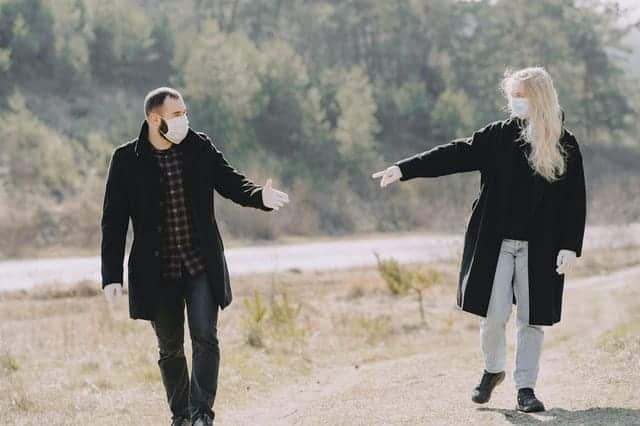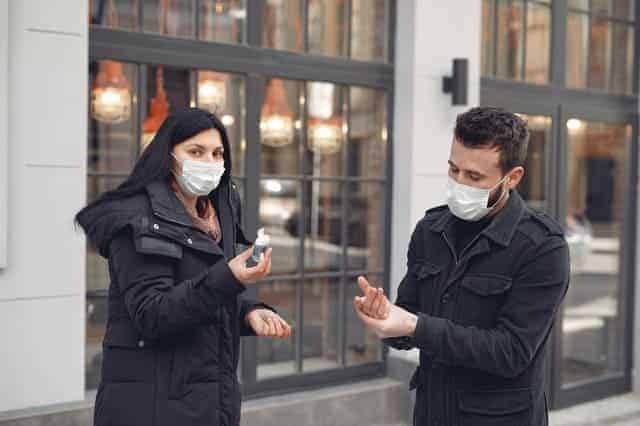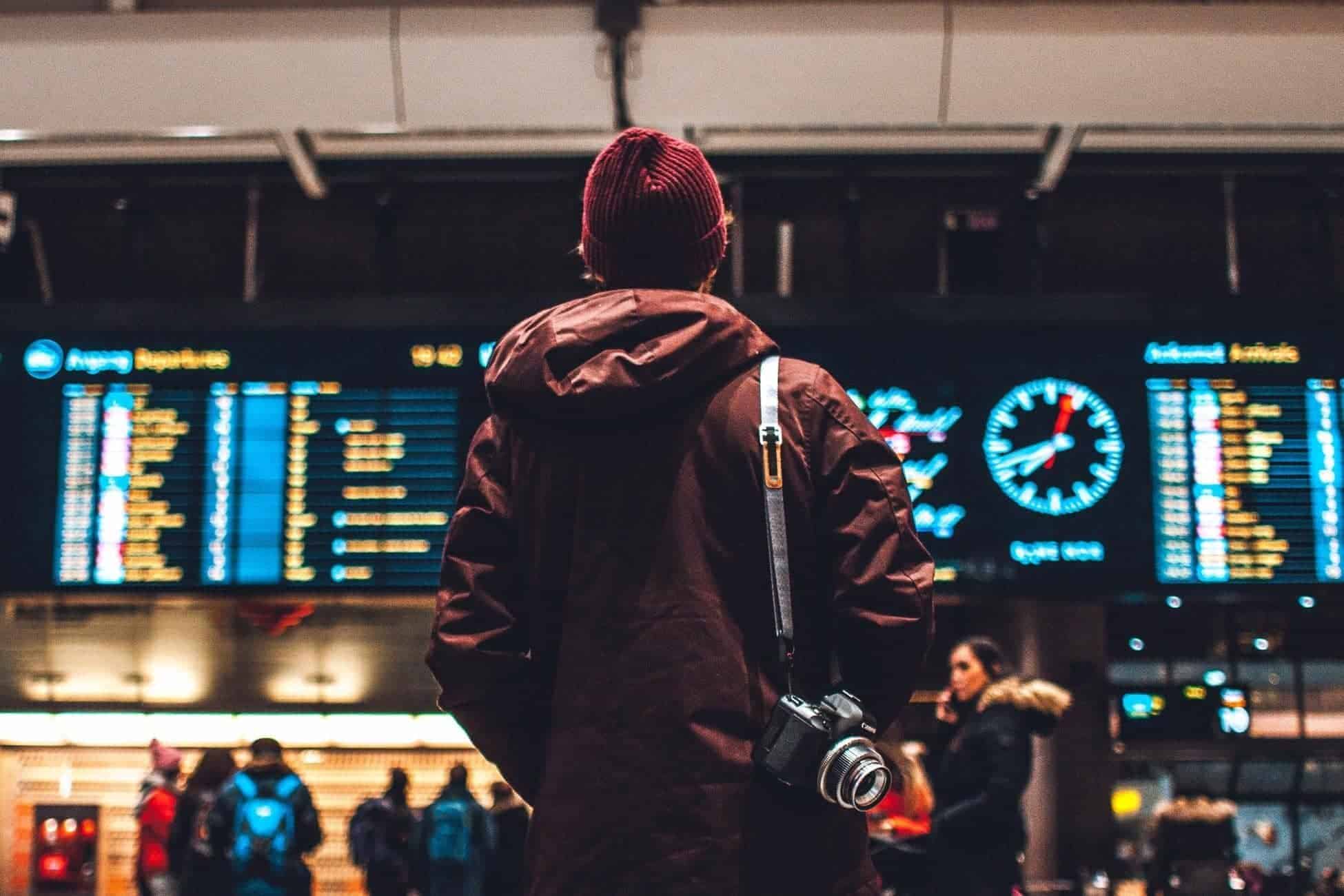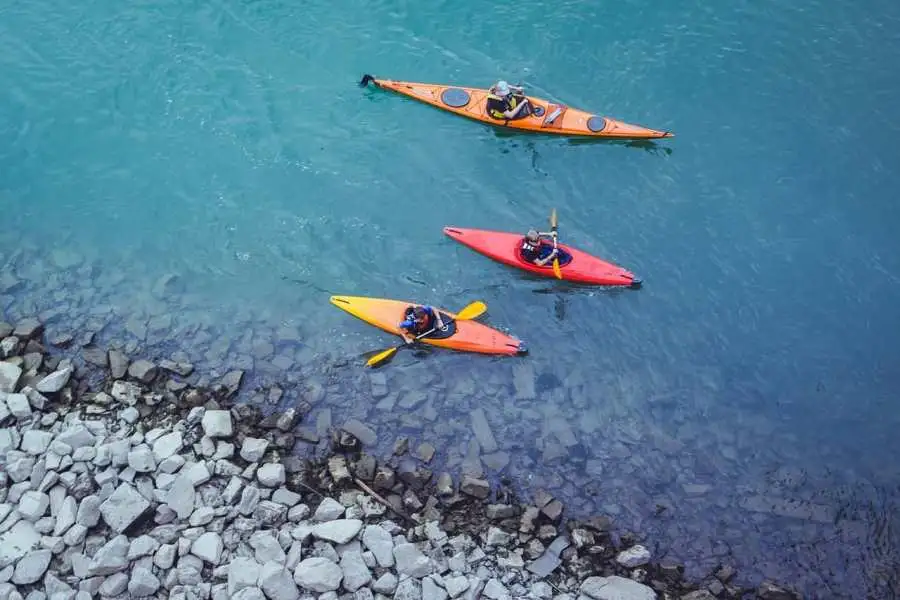It has been over six months since the first COVID-19 case was confirmed in the U.S. Consequently, Americans and folks worldwide are still reeling from the detrimental effects of the virus. No aspect of the American livelihood – social, economic, political, religious, and so on – has been spared given the scale of the crisis. In this, we will try to figure out, a few Coronavirus Travel Advice and Coronavirus Travel Restrictions to be observed in this pandemic season.
Primarily, COVID-19 has reoriented how people perceive and interact with one another. People can no longer shake hands, kiss, or hug. Crowds and gatherings are no longer viable. About 315 million Americans have already been affected by stay-at-home orders. Another countless lots have been rendered jobless since businesses closed.

Likewise, outdoor activities such as hiking, camping, and running have been disrupted as parks, camping grounds, hiking trails, and other similar spots are temporarily out of bounds. That is not all; traveling in and out of the U.S. is virtually impossible while in-country movement remains uncertain. In the same way, most European countries have closed doors to American tourists owing to a high prevalence of COVID-19 in the states.
Nevertheless, in the face of all these difficulties, there is light at the end of the tunnel. Several states have begun easing lockdown measures. The World Health Organization (WHO) encourages folks to make their safety a top priority as more countries follow suit. Read on for more coronavirus travel advice.
Common Precautions Measures Against Covid-19
There are over 3.83 million confirmed cases of coronavirus in the US as of today. COVID-19 – the virus behind the disease – is highly contagious. It spreads rapidly from person to person. On the bright side, the American Red Cross recommends several safety measures people can incorporate to keep the virus at bay. Here is an exclusive breakdown:
i. Know the signs and symptoms
By knowing, the signs you can self-isolate, call 911 for medical help, or visit an emergency facility in your locality. In the same way, it is possible to identify other infected persons and help. Early symptoms of coronavirus are fatigue, fever, and dry cough. Some people also complain of sore throat, loss of taste, headache, diarrhea, conjunctivitis, and aches. Serious symptoms are chest pain, shortness of breath, and loss of speech or movement.
ii. Practice social distancing
Avoid close contact with infected or uninfected people. You never know. Some people are asymptomatic. They might be sick but show no symptoms. Moving on, the virus tends to stick around, on surfaces, and in the air. Thus, being close to infected folks is risky. That is why people need to practice social distancing. Any time you go into public places, keep a six feet/two-meter distance away from other people.
iii. Wash your hand
It is imperative to wash your hands often with running water and soap for (or otherwise use a hand sanitizer with an alcohol content of at least 60%) not less than 20 seconds. This is crucial after visiting public places, sneezing, coughing, and blowing your nose.
iv. Avoid touching your face
You should not touch your mouth, nose, or eyes unless you wash your hands thoroughly. Unwashed hands heighten your chances of infection.
v. Disinfect surfaces and objects regularly
The virus can survive on surfaces for a period ranging from a few hours to days. This increases the possibility of infection for anyone. With that, objects and surfaces that are touched regularly require disinfection. This includes faucets, handles, doorknobs, toilets, counter steps, and light switches.
vi. Put on a cloth face covering while around others
Another way to mitigate the spread of the virus is to put on a mask or cloth face covering when in public or around others. It prevents infected people from spreading the virus. However, do not place face-covering on kids below the age of two, incapacitated persons, and whoever is unconscious or has breathing problems.
vii. Cover your mouth and nose when sneezing or coughing
Little body fluids droplets eject out of the nose and mouth whenever you sneeze or cough. These body fluids could contain the virus. It is one way by which infected people spread it unknowingly. To keep it in check you should cover up with a tissue or else sneeze and cough into your sleeve or elbow.
Traveling Inside the US and Internationally

Generally, traveling within the US and abroad, especially for leisure is forbidden. Ever since the outbreak of the virus, most countries have banned travelers from countries with severe cases of COVID-19. Unfortunately, the infection rate in the US is soaring by the day making it hard for Americans to travel internationally.
Traveling restrictions have even affected interstate movement. Similarly, a good number of public parks, hiking trails, camping grounds, and recreational centers remain closed. The same goes for hotels, restaurants, and other businesses. To cut it short, the future of travelers of American descent both locally and internationally is uncertain.
Does traveling to campgrounds or going camping pose any risks?
Camping or traveling to campgrounds is risky. COVID-19 is rapidly spreading at a community level across the US. Public facilities like restrooms are shared at camping sites and trails. This might expose you to the virus. That is why most public parks remain closed during the pandemic. Nonetheless, traveling to campgrounds particularly those in remote areas is discouraged owing to the absence of medical care.
What to know before heading for any hiking trail?
Despite a rocky start to the spring hiking season, things are starting to move. Although gradually, forests, beaches, and parks, that have previously been off-limits in different states like California, are now welcoming visitors once more. Yet as more recreational spots begin to open, outdoor enthusiasts must make their health and safety a top priority. Here are a few tips to help you stay on the safe side:
Ensure your preferred trail is open
A large number of parks, forests, and hiking trails shut down as soon as coronavirus became a big concern in the US. As much as lockdown measures are being relaxed and some hiking spots reopening, a good number are still under lock and key. Take time to learn about where you plan to hike before going out.
The infection rate in the area
Before hitting the road, know about the infection rate in the preferred locality. A high infection rate is a red flag. Keep off such spots or exercise extra caution.
Maintain a six feet distance from other hikers
You never know what to expect on the trail. In fact, thousands of outdoor enthusiasts crowd packs and hiking grounds now that other recreational spots are closed. That is why hikers are encouraged to maintain a six feet distance from each other. If that is impossible, for example on narrow trails, hikers need to wear masks.
Put leave-no-trace principles into practice
Putting leave-no-trace principles makes you more considerate of other hikers using the same trail. By clearing up all trash and leaving the outdoors as it was, hikers contribute largely towards curbing COVID-19.
Avoid remote trails or challenging activities
Immediate access to emergency medical services and healthcare personnel is vital in the course of the pandemic. With that in mind, avoid high-risk activities or remote trails. Remote areas may be inaccessible in the event of a medical emergency.
Pack your supplies
Sharing stuff is dangerous during the pandemic. Parks have stores and other shared facilities that might expose you to the virus. Moreover, the facilities are probably closed. Therefore, pack your soap, food, and toilet paper not forget quality hand sanitizer.
Avoid crowded parks
Crowds? Not the best place to be at this moment in time. People hold onto the false belief that the outdoors makes you less susceptible to the virus. That is not true. Everyone is eager to catch some fresh air and take a break from all the pressure that comes with the pandemic. This might explain why the few operational parks and hiking trails may be at full capacity. More people mean a heightened infection rate. Keep off crowded parks.
Conclusion
Surely, folks around the world cannot wait for things to get back to normal. Seemingly, that might take a few more weeks or months but for now, everyone should be extra careful, strong, and hopeful. Anyway, do not take unnecessary risks or be ignorant.
The pandemic is real. Adhere to all the guidelines by the CDC regarding traveling and movement. Self-care is quite crucial. Remember, travelers are at a higher risk of contracting coronavirus. You are your first doctor. Therefore, watch out for the symptoms and seek help when necessary. All in all, we wish the world a quick recovery from the pandemic. Travel safely!
FAQs
Check exhaustive answers to FAQs relating to coronavirus travel advice below:
1. Should I avoid traveling internationally?
Traveling internationally for leisure and other nonessential business is discouraged currently. Access to medical care is the CDC’s main concern. COVID-19 is already overwhelming medical facilities across the world. Besides, most countries have closed their borders and blocked off non-citizens.
2. Can travel to visit family or friends increase my chances of getting and spreading COVID-19?
Yes, it does. Traveling to meet your loved ones poses a great danger to you and them alike. First, learn about infection rates in the locality you wish to visit before setting off. Else, you might spread it to them or get infected yourself.
3. If I travel, what steps should I take to help reduce my chances of getting sick?
To begin with, you need to wear a cloth face covering for your nose and mouth. Secondly, stick to social distancing. Likewise, do not touch your face without sanitizing it. Generally, maintain good facial hygiene.
4. Should travelers wear facemasks or coverings?
According to the CDC, you should wear cloth face-covering whenever in public and that includes airports, bus terminals, train stations, and so on. Facemasks slow down the spread of the virus.
5. What can I expect when departing from other countries?
Departure points in most countries will check your temperature. Aside from that, they inquire about your health status and travel history. Lastly, expect screening, which applies to all passengers.
6. What can I expect when arriving in the United States?
The US has imposed travel restrictions against countries with widespread COVID-19 cases. Upon landing, you will be screened. After that, go into self-isolation for two weeks and keep tabs on your health. Social distancing is also appropriate.
Reference:
How to Protect Yourself from the New Coronavirus
Coronavirus disease (COVID-19) advice for the public
Disclaimer
All the information displayed in this article is in good faith and is exclusively meant for educational purposes. Under no circumstances should the images, graphics, texts, and other materials created by this article be perceived as medical treatment, diagnosis, or instruction. Only seek professional medical advice from a qualified physician concerning any medical condition.
In the event of a medical emergency, contact the nearest medical facility for assistance. Do we neither endorse nor recommend any particular claims, opinions, procedures, or products highlighted directly on the site or through links to an external website?
Always, deduce some of the information from our outdoor, hiking, or camping experience and do not provide any warranty regarding its accuracy, completeness, reliability, and accuracy. Therefore, any action undertaken because of the information available on this website Hiking Gear Lab is entirely at your own risk. We will not be in any way accountable for damages or losses incurred through reliance on the information on our website/this article.
Always, consult your physician or a qualified medical professional for exact information before making a decision on changing your lifestyle or diet depending on the information given in this article.




